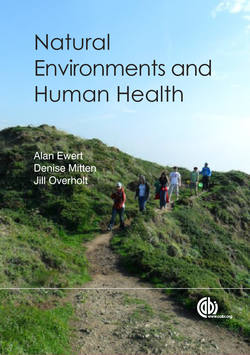Читать книгу Natural Environments and Human Health - Alan W Ewert - Страница 29
На сайте Литреса книга снята с продажи.
The impact of a sense of landlessness
ОглавлениеAccording to Bowers (2006), the wonders inherent in nature are often usurped by modern temptations and economic greed, causing relationships with nature to become insignificant. The cosmology story of enchantment, in which the world is alive with forces, powers, and influences, used to come alive for many US children and others as they played or worked day after day in the outdoors, contributing positively to human development of creativity and values (Cobb, 1977). As the modern way of life in industrialized societies has removed many humans from the natural world, people have forgotten the enchantment or have never known it. Many humans, as individuals or societies, no longer have a personal relationship with the land in which they reside. This makes it easy to disregard humans’ place in the biotic community. Baker (2008), echoing Leopold, calls this almost complete detachment from nature landlessness. She describes landlessness as the constant absence of awareness, respect, and kinship with the land, advancing the loss of wild, untouched places as well as the overdevelopment of urban areas. Leopold (1966) said that landlessness is significant because when people do not love, value, or associate with nature, there is little desire to protect it and explained, ‘The problem, then, is how to bring about a striving for harmony with the land among a people, many of whom have forgotten there is any such thing as land, among whom education and culture have become almost synonymous with landlessness’ (1966, p. 210). Landlessness therefore perpetuates more landlessness. Landlessness also negatively impacts spiritual, mental, emotional, and social health and development.
Box 2.2. Women may react to stress with tend and befriend behavior
This perception of connectedness also manifests today as relic and relevant behavior around stress. Suzanne Braun Levine (2004) reported that women identified their biggest work challenge as plugging into a source of collective professional energy; they want to be a part of supportive collaborative networks, now described as a tend and befriend response. Sparked by noticing in her stressful work experience that women formed supportive groups, Shelly Taylor began exploring women and stress and labeled the behavior she found tend and befriend. The tend aspect involves nurturing activities that help protect self and others and the befriend aspect involves creating social networks to aid in tending. She and her colleagues hypothesized and later gained evidence for the idea that under stress women are devoted to their offspring (possibly matching the energy to the attachment that babies need for survival). This response, underpinned by the hormone oxytocin, by opioids, and by dopaminergic pathways, suggests that oxytocin may provide an impetus for affiliation. She suggested that females create, maintain, and use social groups, especially with other females, to manage stressful conditions (Taylor, 2006).
Landlessness is a loss of a culture’s sense of place. A sense of place is rooted in the concept that people used to, can, and do form emotional, spiritual, and meaningful bonds with natural areas, making the welfare of the land personally significant (Williams and Stewart, 1998). Developing a strong sense of place provides the foundation from which caring relationships with nature are built (Russell and Bell, 1996). As explained later in the book, the paradigm of place-based education is a means to help students develop a fascination and enchantment with nature and regain a personal connection to the land. A sense of place deepens the sense of community with the biotic world, including strengthening relationships among people and societies (Noddings, 2005). Sobel (2008) and others suggest that building this personal connection to the land helps students comprehensively explore the social, political, cultural, and natural components that define their community. With a sense of place it is hard for people to be passive, indifferent observers. The welfare of one’s community, including the natural elements, becomes personally significant and people usually then choose to actively integrate into their personal community (Haluza-Delay, 1999; Lane-Zucker, 2004; Gruenewald, 2008). Elaborated later in this book, spiritual, mental, emotional, and social health all improve with grounding in a sense of place.
